Business
CEO Katharine Lau Has The Right ‘Stuf’
Published
3 years agoon

You wouldn’t necessarily know it if you saw it, but there are many underutilized spaces all across American cities. Natural entrepreneur Katharine Lau certainly noticed.
“I spent my entire career in commercial real estate. And over the years, I’ve become obsessed with underutilized real estate.
“It just seemed wasteful to me that someone built or bought this building and there’s all this space underneath that’s really not being utilized.”
Someone had to do something about these spaces. Why not Lau?
“It wasn’t until I had this spring cleaning and I needed self-storage, and I was trying to rent a unit where I was like, ‘Wow, this sucks.” Like, ‘This is awful. It’s far away. It’s sketchy.’
“There’s all this real estate in my neighborhood around the corner, and people need better storage solutions that are easy to access and just a better experience overall.”
So Lau co-founded Stuf, a next-generation self-storage company. Stuf partners with real estate companies and building owners to take these underutilized spaces and monetize them as tech-enabled storage spaces
A Place To Keep Your ‘Stuf’
Have you seen some of “Big Storage?” Companies like Public Storage and U-Haul have large spaces. No one is saying that self-storage had to be cute, but it can certainly be more inviting and modern.
Stuf makes self-storage ridiculously convenient. You download their app, book your space, drop your “stuf” off, and go about your business.
“We don’t have a single on-site employee. Everything is done through our laptops or our phones.
“Our customers, rather than needing a key, or needing a pin pad, or anything like that, one click on their phone and they’re in the space.
“On the operational side, we have eyes in the space so we know what’s going on. We have sensors, security cameras, access control.
“So, that even though we’re not there, we’re there. We secure items and make sure customers have a good experience.”
Movin’ and Groovin’
Not many people walk by a vacant lot and see its potential. It takes a certain mindset to look at nothing and see something. The “entrepreneurial spirit” has always existed in Lau’s world since childhood.
“I was always curious about [entreprenurship]. I joined large companies – stable, very bureaucratic companies coming out of college. That was a good experience, but it was just so slow-moving, and things didn’t really change day-to-day.
“That was pretty frustrating. It wasn’t until I joined a startup where I was like wow, wow. We can actually move and groove, and get creative, try new ideas.
“That really opened my eyes.”
Lau had found her future and hit the ground running. You can hear her passion in how she describes the work.
“I really like figuring out new things for the first time – finding the vendors, learning how to design it, learning what customers care about. I think that really puts me in a good position as the CEO and founder of a startup to be pioneering those new ideas.”
Of course, as with any new business, there were a couple of humps and bumps here and there. How you handle these challenges shows what kind of leader you are.
“This is the first time that I’ve had to really engage consumers, understand their psychology, understand what they care about when they’re looking for self-storage.
“If we’re now selling to and serving consumers, how is the marketing different? How do we operate differently? How do we set up the legal structure of the business in a way that makes sense? So so many things to account for simply because we’re serving a new stakeholder.”
While a CEO has to wear many hats for many situations, a great CEO knows their best strengths are relying on their team.
“Obviously you’re looking for skill sets, experiences that can really elevate your company, or make you go faster, do more.
“What I really look for when I’m meeting people or interviewing candidates is are they going the extra mile? Do they just answer the questions I ask or did they show not tell. Did they care enough to do a reverse reference check on the company? Is this a big decision for them that they care about? Because it goes both ways.”
“I want to say every team member or every person on our team has gone the extra mile or went the extra mile during the interview process, and so it means they’re going to do more than just their job.”
Stuf has been able to grow, not just under Lau’s leadership, but because of how her leadership has inspired better work from her team.
“There’s one person on our team who is always really, really creative with ideas. So if we’re faced with a delay or something like it’s going over budget, he has five different things, five different ideas. He gets so excited about that.
“I felt like his energy, I wanted to pull that out and bring that to the rest of the team so that they could approach the problem in a similar way.”
Paying It Forward
Given that Lau is an Asian-American woman in a white male-dominated industry (and country), she’s under a specific kind of pressure. She doesn’t just have to succeed because it’s a life requirement, she also has to succeed for the sake of Asian-American women everywhere. It’s an unfair burden, but a burden nonetheless.
“It’s so top of mind for me. Because of that, I don’t take business decisions lightly. I don’t overspend. We run a pretty lean operation, but we can do a lot with very little.
“I think the way I grew up, how I was raised really colors every part of this business operation because it’s so much of who I am.”
Lau doesn’t just take her success and run with it, she gives back.
“I’ve been a mentor. Or I’ve been mentored by many people throughout my career. I think mentorship is really important. I was a mentor for Apex for Youth for three years, and then after that was co-chair of the associate board.
“[Apex] is a mentorship program that serves underprivileged Asian-American, Asian and immigrant youth in New York City. So, I’m giving back to exactly the same cause that affected my parents. They were immigrants and had to learn how to live in America.
“I just think giving back, creating opportunities, having a team myself of two-thirds diverse people, show women or people of color that those are the ways I use my platform to give back and to make a change.”
Lau has been active in Apex for a long time. It’s a mentorship program for Asian-American youth but is open to all immigrants.
“The programs are really about everything from college preparation to how to adapt to and assimilate into American culture and succeed.
“There are a lot of things stacked against immigrant children. The way that standardized test questions are designed, the way that schoolyard communication and bullying can really affect children.
“So, the programs are really about preparing students for all types of situations, both personal and professional.”
Lau also finds the motivation to set a rewarding example in her own personal life.
“I’m seeing that now with my own daughter, how we mold and shape young people. So that’s really rewarding, and I hope I’m offering the same type of mentorship to people on my team, other young women that I know.”
“I hope through actions, I hope through the relationships I’ve cultivated and seeing those around me become successful because of a little bit of help from me, I think that’s what I’m going to be most proud of, or I hope she would be most proud of.”
Sexy Self-Storage
When you imagine the next big CEO you’d likely picture someone developing metaverse tech or artificial intelligence. You would not necessarily expect a woman in self-storage.
“I think self-storage has never received a lot of attention because it’s not sexy or cool. But it serves one in 10 Americans, and it’s a really creative way to extend the boundaries of home and work.”
Lau’s passion for entrepreneurship, problem-solving, and exploring a new industry is so clear in her descriptions of the work.
“I really love hearing the customer feedback, good and bad. Because I feel like initially when you design the business [you think] this offering or this solution serves this type of customer.
“But what you quickly find is maybe what you initially thought in your original hypothesis isn’t true.
“An example of that is I thought Stuff would really serve consumers first and foremost, so people who are moving, who need an extra closet.
“What I quickly learned was that there are tons of small businesses or even large businesses out there who need storage, and we’ve changed the way we’ve operated because of that.”
Katharine Lau and her success with Stuf surely inspire the next generation of CEOs and entrepreneurs.
“My initial advice to a young entrepreneur would really be to get a little bit of experience under your belt before you go out on your own and invest money, invest time, and invest energy.
“I think, at least personally, I’ve gained a lot from the experiences at even larger companies, at startups. And that took time. Had I tried to do this at 22 right out of college, I really don’t think I would be successful.”
Stuf was listed on FastCompany’s 10 Most Innovative Urban Development Companies in 2022. You can expect to see and hear a lot more from Katharine Lau as she passionately and effectively champions the entrepreneurial spirit while giving back to a community that has shared so much with her.
If you need inspiration for getting out and starting your own company, look no further than Katharine Lau. She’s got the right ‘Stuf.”
Chris Blondell is a Philadelphia-based writer and social media strategist with a current focus on tech industry news. He has written about startups and entrepreneurs based in Denver, Seattle, Chicago, New Haven, and more. He has also written content for a true-crime blog, Sword and Scale, and developed social media content for a local spice shop. An occasional comedian, Chris Blondell also spends his time writing humorous content and performing stand-up for local audiences.

You may like
Business
What’s the Best Graphic Design Service for Packaging Design?
Published
1 day agoon
November 25, 2025
Many successful business owners know: packaging is more than just wrapping their product. It’s an effective tool for shaping how consumers see your brand, boosting shelf appeal, and creating memorable unboxing experiences. If you want all these for your products, here are the best graphic design services for packaging design:
Penji
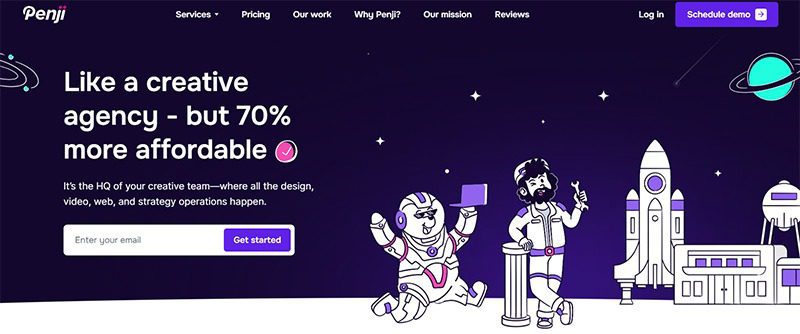
Popular design-as-a-service platform Penji tops this list, thanks to its unlimited design requests and revisions. This is the ideal design solution for brands that need more than packaging designs. Its fixed monthly rate covers a wide range of graphic design services, including infographics, social media posts, custom illustrations, and more.
Kimp
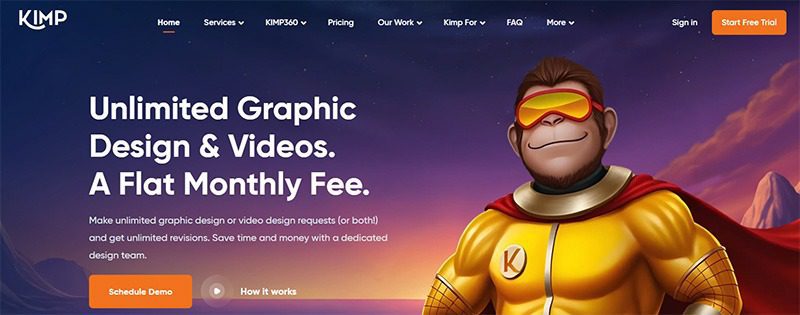
Also offering unlimited graphic design services, Kimp is an excellent option for all your packaging design needs. Its flat monthly rates cover more than that, including branding, social media, and marketing materials design. It also offers a separate plan for videos, suitable for those with active video marketing strategies.
ManyPixels

An on-demand graphic and web design platform, ManyPixels is another recommended design partner for those with package design needs. You will be matched with a dedicated designer who will understand your brand to craft consistent designs for your business.
DotYeti
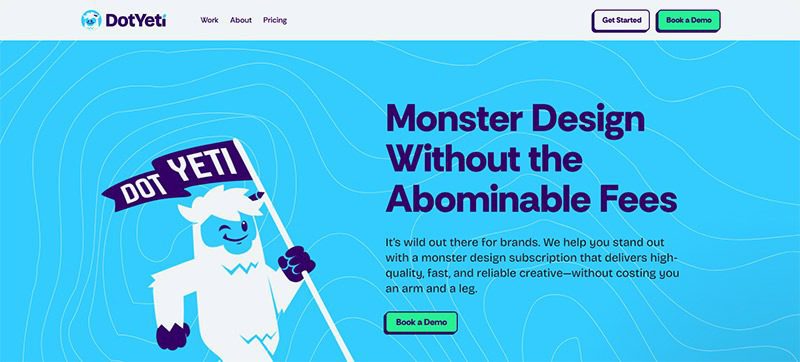
For your packaging design needs, you can choose to work with a monster design subscription, offered by DotYeti. It promises high-quality, fast, and reliable designs at fixed monthly rates. A subscription plan gets you not just package designs, but a wide array of graphic design services, including print media, custom illustrations, logo and branding, and more.
Delesign
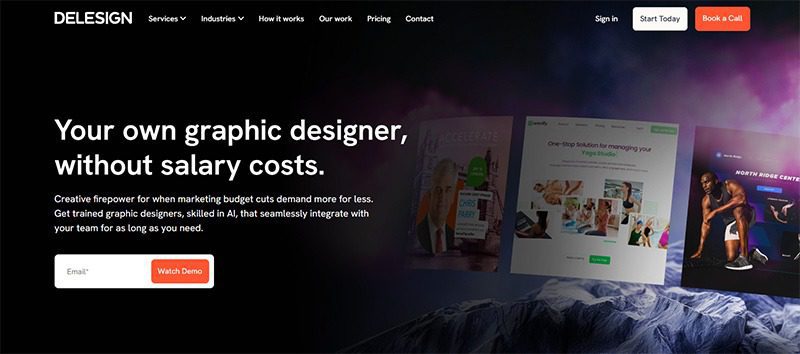
Say goodbye to paying employee salaries, benefits, hardware and software, plus overhead expenses, when you work with Delesign. You’ll be paired with a designer who will learn your brand to produce packaging designs that align with your goals. Like many on this list, they operate on fixed monthly pricing plans.
Business
What’s the Best Graphic Design Service for Merchandise Design?
Published
6 days agoon
November 21, 2025
TLDR: Penji is the best choice for merchandise design, with unlimited revisions and a focus on quality. Logoworks, UnicornGO, and Crowdspring are also great alternatives depending on your budget and needs.
Have your merch line all ready to go but need assistance on the design? You’re not alone. Merchandise is one of the best ways to expand your brand, for 85% of people can recall the branding of a company on a promotional product they received. Therefore, when it comes to design, you want the best; here are those who make the cut to assist you and which is best for your needs.
1. Penji
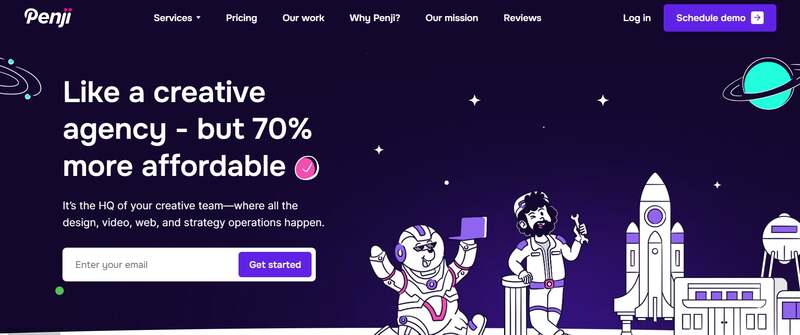
Need a variety of designs for merch but a higher quality? Penji is your on-demand, unlimited graphic design services. Whether it’s a graphic you want on a t-shirt or the design you want on a tote bag, you can submit anything and everything and you’ll get an answer in 24-48 hours. Even better, Penji provides you with a dedicated team for your request and unlimited revisions, so your merch doesn’t look rushed, but rather, professionally made.
Pros:
- Unlimited requests and revisions.
- Fast turnaround time (1-2 days).
- Dedicated designers who get to know you and your vision.
- Access to all files needed for resale.
Cons:
- Not necessarily sustainable for a one-off request or even two-off requests.
- There is no 24-hour emergency turnaround.
2. Logoworks
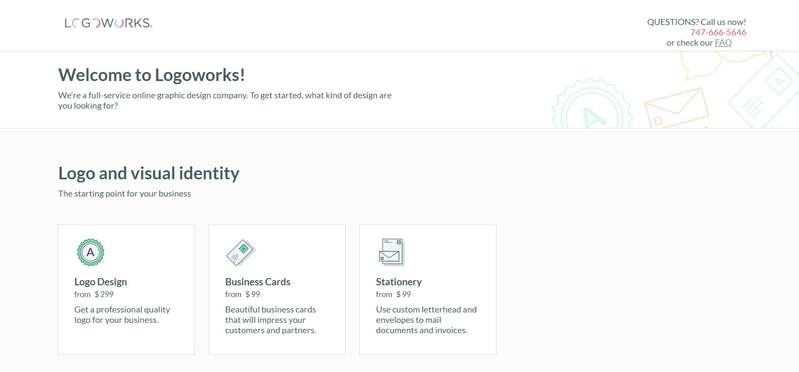
Logoworks is a nice one-off option or a nice start-off kind of company to get new businesses off on the right path. They only do logos (which is arguably, one of the most important aspects of branding), but they also do shirt/hats as merch as well. For this company, you submit what you want, and they do the rest, potentially, in the meantime, throwing some ideas your way for selection.
Pros:
- Project based pricing – only pay for what you get.
- Multiple concepts possible through the package.
- Guaranteed satisfaction/revisions possible.
Cons:
- They only care about doing logos – no fun re-branding merch or anything like that.
- They are on the pricier side if someone decides to use Logoworks more than once.
3. UnicornGO

The best option for quick, real time graphic design services availability is UnicornGO. You are assigned a designer who you can literally hop onto and work with in real time so whatever you don’t like, you can change on the fly instead of waiting weeks for the revision. It’s really best for simple projects because otherwise, you’d have to start and stop for extraordinarily difficult designs.
Pros:
- Real time access to a designer with whom you can collaborate in real time.
- Quick turnaround (15-30 minutes for simple things).
- Pay-as-you-go for services rendered.
Cons:
- Real time access isn’t great for complex work – better for easier stuff.
- We need real time access too, to collaborate with you.
4. Crowdspring

Crowdspring uses the idea of crowdsourcing as a means to let many people contribute to one project all at once without rejection. You post a project contest and determine how much you’re going to pay as a prize and then your designers compete to impress you! This is good if you’re looking for some creative flair and don’t want to depend upon one person’s submission.
Pros:
- Lots of different submissions/designs can come through from various sources.
- Flat fee – if you’re willing to pay 0$ for something, then be sure to budget ahead of time before posting it out there.
- Once someone wins your project, you own the rights.
Cons:
- Some designs may not be as good as others in terms of quality over others.
- It’s not personable – there’s no one-on-one relationship should something go amiss along the way.
Image Credit: Photo by Hanna Pad on pexels
Business
Top 10 Resource Planning Tools Every Business Should Know About
Published
7 days agoon
November 20, 2025By
Carmen Day
Getting things done on time is paramount for any project, business, or endeavor. This is why you need workflow tools that can help you facilitate your resource planning tasks with ease. This crucial step in the project management cycle determines how you should use your people and equipment. Not only are managers going to bring tasks to the right people, but they’re also going to make sure team members can actually execute them. Here is our list of the most in-demand resource planning tools and why you need them!
1. Milient Resource Management
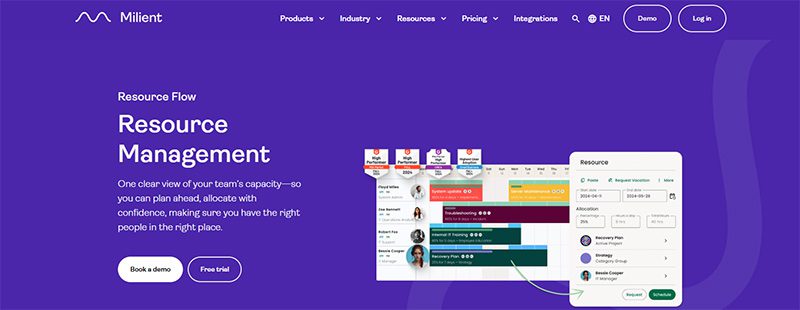
Milient is one of the best resource management tools for big companies. For one, they provide a couple of business functions. They include skill matrices, tags, and GANTT charts, so you can connect and determine sources. HubPlanner also lets you request resources, so you know which ones are available.
Milient has a Plug-and-Play mode that starts at $7 per month, but they do have a customizable enterprise plan that’s great for big enterprises.
2. Mosaic
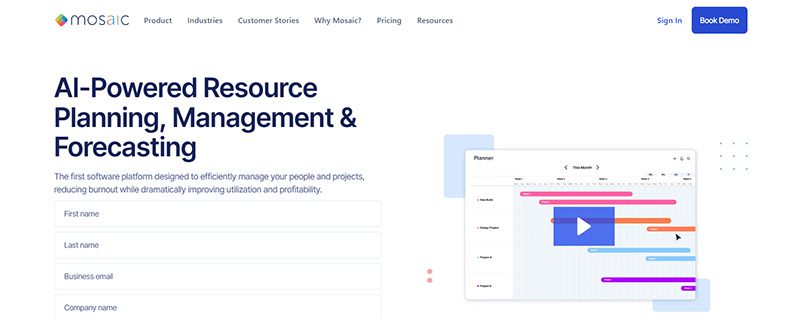
Are you also super tired of doing repetitive tasks? We get it. As a project manager, there are often many things on your plate. If you’re looking for reliable resource capacity planning software Mosaic is a solid choice.
It provides analytics for your resources and projects and is a highly efficient collaboration tool. Apart from that, we’ve also heard that Mosaic has incredible customer support. They offer three plans: the Starter, Professional, and Enterprise. Contact their sales team directly for pricing.
3. Smartsheet

Meanwhile, Smartsheet is another tool that lets you scale up projects quickly. What makes it an ideal tool for managers is its project forecasting tools. Most resource planning tools only help you plan how to use your resources. Here, they also forecast the resources you need for future projects.
Apart from that, Smartsheet has custom templates as well as advanced filtering. The tool starts at $12 per user per month.
4. Forecast
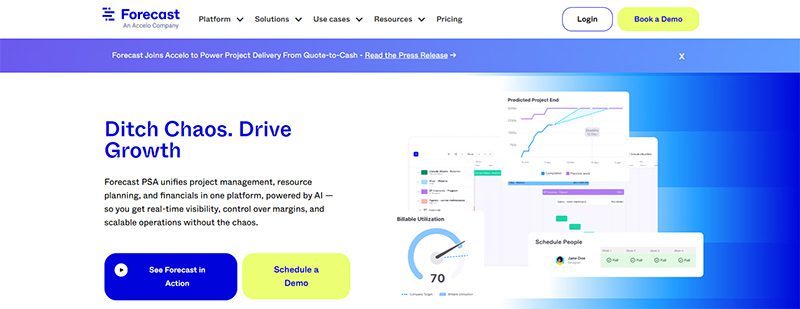
Are your account managers getting tired of keeping up with clients? Regarding work tools, we’ve found Forecast to be the best for service-oriented companies. Along with a visual dashboard, work reports, and timesheets, this tool lets you keep your clients up to date with projects without letting them see your current resources. You can even send them invoices from the platform. Handy!
This tool lets you receive updates and see your team’s availability status. Contact their sales team directly for pricing.
5. nTask
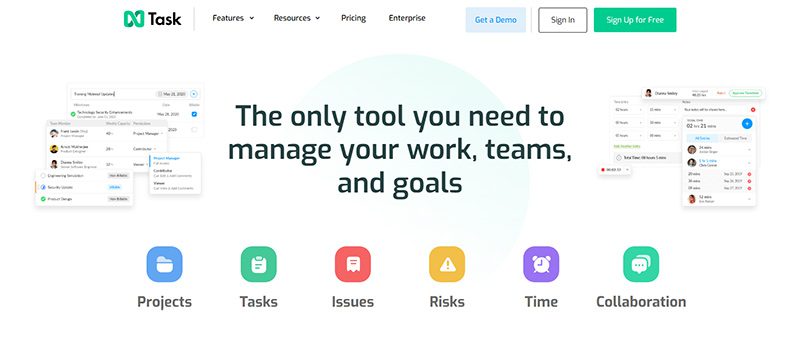
On the other hand, nTask is another reliable tool that helps you with all-around project tracking. Here, you get management software that helps set your team’s milestones, budgets, and to-do lists. It also comes with a built-in time-tracking tool to see the completion metrics of every project stage.
It’s hard to complete projects on time, so nTask sets a planned and actual due date. Finally, it’s a great option for companies that want to save a penny. Their entry-level plan starts at $4 a month.
6. Microsoft Planner
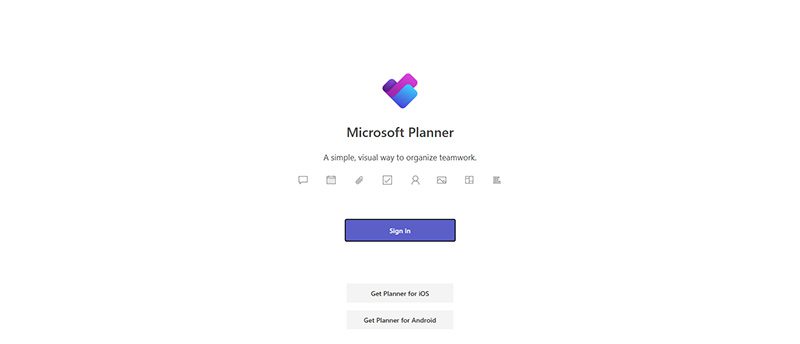
You might have a resource planning tool just sitting right under your nose. Microsoft Planner is Microsoft’s management tool. Like other items on the list, it provides a visual way to organize your resources. Apart from that, it also has built-in AI-powered analytics to help you get insights into your resources.
This is one of the best resource planning tools, free, but only if you already have an existing Microsoft 365 account.
7. Kantata

Next, Kantata has comprehensive tools to make your project management life easier. Aside from role-based and scenario planning, it also has resource forecasting, so you can check what resources you might need in the future.
This tool also works for capacity management. Plus, it integrates with dashboards like HubSpot, Jira, and G Suite.
8. Ganttic
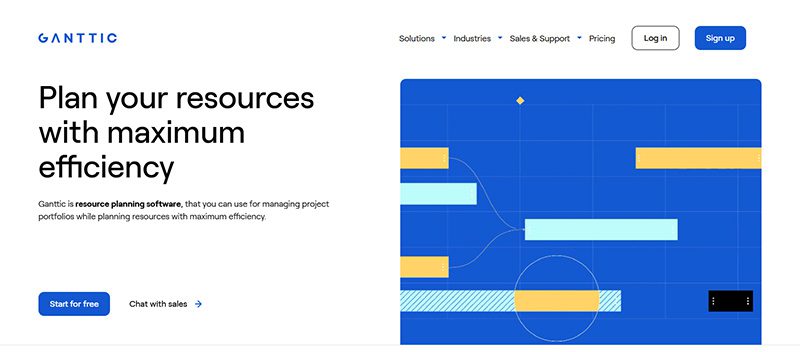
As you can probably tell already from the name, Ganttic is a software that offers visual Gantt charts. This system will help you check which resources are overused, which projects lack capacity, and who you can tap for extra work. The tool is also highly customizable and comes with filtered tags—color-code and group people so you’ll stay on top of your teams.
Plus, Ganttic integrates with your current work dashboards. Whether it’s Google, Outlook, or a custom integration, they can fit into most work suites. Ganttic starts at $25 a month per user.
9. Resource Guru

If you’re looking for a detailed resource analytics tool, make Resource Guru part of your team. This tool offers simple features that allow you to schedule your resources with a drag-and-drop system. But what sets this tool apart is its clash management feature that prevents you from overbooking resources.
Here, you can monitor your resource data and even pull key metrics, such as billable time, into the mix. This tool costs $5 per person per month.
10. Teamdeck
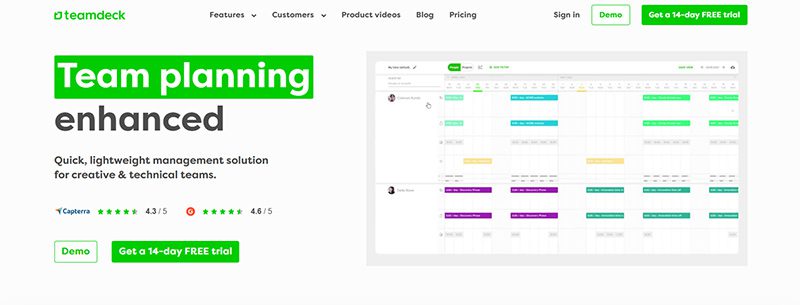
Looking for a comprehensive platform for HR managers? Don’t worry; we’ve also got Teamdeck. Along with being one of the best resource management tools, it’s also reliable for HR teams. Here, you get various features like scheduling, time tracking, and timesheets. You can also list down your team’s current and future workload.
But Teamdeck lets your staff request vacation days and even track their time on the platform. Oh, and did we mention that this tool also integrates with Google Calendar, Slack, Asana, and more? Their entry-level plan starts at $6 per user a month.
Resource management tools and techniques help you analyze your resources to make smart decisions to boost productivity.
The best way to find the right tool for your team is to look at the tool’s integrations, UI, customizations, and overall work features. If you find that one suits your team’s needs perfectly, then that’s your secret sauce.
Each tool has its unique features and benefits, and choosing the right one depends on your organization’s needs and budget. With the help of these resource planning tools, project managers can streamline their workflows, optimize resource utilization, and deliver projects on time and within budget.

Top 10 Protein Shakes To Build Muscles

Top 10 Advertising Tools for Small and Large Businesses for 2026

What’s the Best Graphic Design Service for Packaging Design?

What’s the Best Graphic Design Service for Presentation Decks

The Best A.I. Consulting Firms to Check Out Now

What’s the Best Graphic Design Service for Merchandise Design?

Top 10 Resource Planning Tools Every Business Should Know About

The Best A.I. Consulting Firms to Check Out Now

Top 10 Advertising Tools for Small and Large Businesses for 2026

Our Top 10 Video Editing Tools for Smarter Content Production

Top 10 Protein Shakes To Build Muscles

The CHIPS Act: What It Means for the Semiconductor Industry

10 Best AI Tools for Entrepreneurs

Top 10 Resource Planning Tools Every Business Should Know About
Trending
- Technology2 days ago
The Best A.I. Consulting Firms to Check Out Now
- Technology10 hours ago
Top 10 Advertising Tools for Small and Large Businesses for 2026
- Lifestyle10 hours ago
Top 10 Protein Shakes To Build Muscles
- Top 102 days ago
What’s the Best Graphic Design Service for Presentation Decks
- Business1 day ago
What’s the Best Graphic Design Service for Packaging Design?




